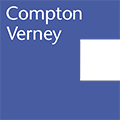Explore
Farming

Prize Ram
Unknown
about 1870
Oil on Canvas
53.6 x 64 cm
The dramatic improvements in animal husbandry and selective breeding that took place from the 1750s onwards – a response to the innovative methods of Leicestershire farmer, Robert Bakewell (1725-95) – led to a demand for animal portraiture, as prosperous farmers commissioned artists to record their prize animals for posterity. Before the introduction of books devoted to the various breeds, animal portraiture was a means of advertising the quality and ancestry of a farmer’s stock.
Artists were, though, often required to exaggerate the animal’s proportions in profile to promote a breeder’s livestock to potential clients. Spindly legs, small faces but very fat bodies became the norm in these portraits – pictures that were displayed in grand country houses and farmhouses – to impress visitors. Fat also meant profit, since fattened meat could feed a burgeoning population and the rendered fat itself could be used as a preservative and tallow. Those wealthy enough could commission the leading animal artists of the day, such as George Stubbs, to portray their beasts. Many farmers, however, could not afford professional artists, so called upon local craftsmen such as the local plumber or glazier to produce a painting.
Prize Ram about 1870 © Compton Verney
Reference CVCSC-0061.F




